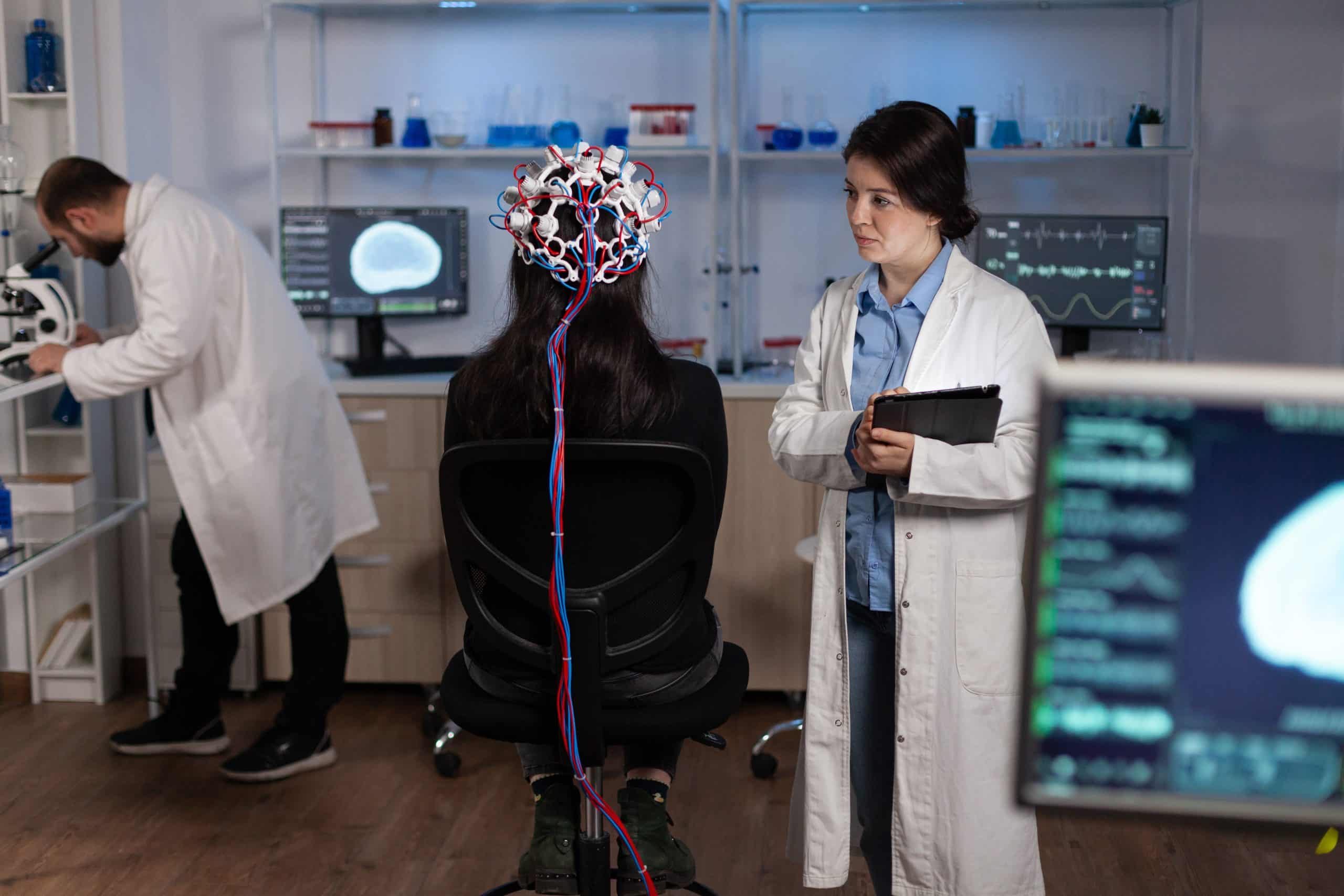How Are Smart Contact Lenses Evolving to Monitor Health Metrics?

In the ever-evolving landscape of wearable technology, smart contact lenses have emerged as a promising frontier. These vision-correcting devices do much more than just help you see better. They are embedded with tiny sensors and microchips that can monitor a plethora of health data, offering a wealth of information right at the tip of your eye. With the potential to transform healthcare, smart contact lenses are truly the future of vision tech.
Unveiling the Functioning of Smart Contact Lenses
Before delving into the nuances of how they monitor health data, let’s first understand what smart contact lenses really are. They are essentially contact lenses, but with an added layer of sophistication. These devices are equipped with built-in sensors and circuits that can gather health-related information from the wearer’s tears or sweat. Yes, you read that right – your sweat and tears aren’t just signs of your emotional state, but valuable sources of health data too!
A lire également : What Role Do Nanorobots Play in Targeted Cancer Therapy?
Now you might be wondering – how exactly do these lenses extract and process this information? Well, the science behind it is truly fascinating. The sensors and microchips embedded within the lenses can detect and analyze the chemical composition of your tears or sweat. These details are then processed and transmitted wirelessly to a connected device like a smartphone, providing real-time health updates.
Glucose Monitoring: A Breakthrough for Diabetic Patients
One of the most remarkable capabilities of smart contact lenses is their potential to monitor glucose levels. Diabetic patients, you might want to listen up here. Imagine the convenience of having your glucose levels continuously monitored, without needing to prick your finger or carry around a separate glucose monitoring device.
En parallèle : How Can Technology Assist in the Restoration of Damaged Ecosystems and Habitats?
The microchip and sensors embedded in the smart lens can detect glucose molecules in tears. When the glucose levels are too high or too low, the lens changes its color. The wearer, or even a remote healthcare provider, can then monitor these changes through a smartphone app, alerting them to any potentially dangerous fluctuations in glucose levels.
This technology offers a non-invasive and hassle-free solution for diabetic patients, making glucose monitoring a seamless part of their daily routine.
Monitoring Intraocular Pressure (IOP)
Another key health metric that smart contact lenses are capable of monitoring is Intraocular Pressure or IOP. This is particularly useful for patients with glaucoma, a condition characterized by increased pressure within the eye that can lead to vision loss.
Smart contact lenses can provide continuous IOP measurements, offering a more comprehensive dataset than the sporadic readings obtained at the doctor’s office. This constant monitoring allows for early detection of any significant changes, potentially preventing further ocular damage.
Skin and Sweat Analysis for General Health Monitoring
While tears contain a wealth of information, sweat also offers plenty of health metrics. It’s not just a physical response to heat or stress, but a biological treasure trove of data. Smart contact lenses can analyze your sweat to reveal a myriad of health indicators, such as dehydration levels, electrolyte balance, and metabolic function.
Some lenses are also designed to measure skin temperature, providing data about the wearer’s general health status. This continuous monitoring could potentially detect early signs of fever or infection, providing a more proactive approach to healthcare.
Turning Vision into Data
The eyes are not just the window to the soul, but also a rich source of health data. Apart from monitoring glucose levels and IOP, smart contact lenses can continuously analyze the wearer’s visual environment. This technology could potentially be used to monitor screen time, detect early signs of eye strain, or even evaluate the wearer’s exposure to harmful UV radiation.
The fusion of vision technology and health data monitoring in smart contact lenses is truly a glimpse into the future of healthcare. By turning vision into valuable data, these devices take personalized healthcare to a whole new level.
The evolution of smart contact lenses is a testament to the transformative power of technology, underlining the potential of these small yet sophisticated devices in revolutionizing healthcare. As we continue to stride into the future, who knows what other health metrics these smart lenses will be able to monitor!
Augmented Reality and Drug Delivery: The Extended Capabilities of Smart Contact Lenses
In addition to health monitoring, smart contact lenses also have the potential to revolutionize aspects of augmented reality (AR) and drug delivery. Let’s dive into these exciting possibilities.
Augmented reality is a technology that overlays virtual information onto the real world, enhancing our perception and interaction with our surroundings. Smart contact lenses could serve as a highly portable and convenient AR platform. Imagine having directions displayed directly in your field of vision or being able to identify plants or animals instantly during a hike. The smart lens could analyze the wearer’s field of view in real time, providing an augmented layer of information for enhanced interaction with the world.
On the other hand, drug delivery is another area where these tiny, innovative devices could make a significant impact. Specifically, for ocular conditions, a smart contact lens could deliver medication directly to the eye over a sustained period. This could potentially improve the treatment of conditions such as glaucoma and dry eye syndrome. The lens could monitor the level of medication in the tear fluid and release additional doses as needed. This approach could optimize the effectiveness of the treatment and minimize potential side effects by providing controlled, local delivery of medication.
The Future of Smart Contact Lenses
As we venture further into the 21st century, the capabilities of smart contact lenses continue to expand. These wearable devices are not just about vision correction anymore; they are set to transform healthcare, AR interaction, and drug delivery.
By offering real-time health monitoring, they can provide valuable insights into glucose levels, IOP measurement, dehydration levels, and more. This could lead to early detection and intervention, potentially saving lives and improving the quality of life for many.
The potential of smart contact lenses in AR could redefine how we interact with the world, enhancing our experiences and learning. Meanwhile, their potential in drug delivery could revolutionize the treatment of ocular conditions, providing more effective and comfortable therapy options.
However, challenges remain in terms of ensuring long-term comfort, reliability, and affordability of these lenses. As researchers and developers continue to innovate and refine the technology, we can look forward to seeing these wearable biosensors become an integral part of our daily lives.
In conclusion, the smart contact lens embodies the fusion of vision technology with health monitoring, augmented reality, and drug delivery. It’s a testament to the power of technology and innovation that something as small as a contact lens can offer such significant benefits. As we continue to push the boundaries of what’s possible, we look forward to more exciting advancements in this fascinating field.
Remember, the smart contact lens is more than just a vision-correcting device, it’s a wearable health monitor, an AR interface, and a drug delivery system, all rolled into one. Truly, the future of wearable sensors and personalized healthcare lies in the blink of an eye.
